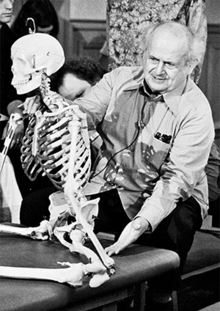We have found a local Feldenkrais practitioner, Christine Toscano, that we both will visit for lessons starting in November. Ms. Toscano also had a career as a licensed acupuncturist.
Ms. Toscano recommended we read Chapter 5 of the book by Norman Doidge, M.D., "The Brain's Way of Healing: Remarkable Discoveries and Recoveries from the Frontiers of Neuroplasticity," (Penguin Books, 2016). The chapter covers the life and work of Moshe Feldenkrais (1904-1984). He was a engineer, kudo master, movement therapist, and healer. The chapter discusses some of the core principles of his theory and methods as follows:
"1. The mind programs the functioning of the brain.
2. A brain cannot think without motor function.
3. Awareness of movement is the key to improving movement.
4. Differentiation: making the smallest possible sensory distinctions between movements - builds brain maps.
5. Differentiation is easiest to make when the stimulus is smallest.
6. Slowness of movement is the key to awareness, and awareness is the key to learning.
7. Reduce the effort whenever possible. Relax.
8. Errors are essential, and there is no right way to move, only better.
9. Random movements provide variation that leads to developmental breakthroughs.
10. Even the smallest movement in one part of the body involves the entire body.
11. Many movement problems, and the pain that goes with them, are caused by learned habit, not by abnormal structure."
Awareness Through Movement by Moshe Feldenkrais
Change Your Age by Frank Wildman

No comments:
Post a Comment